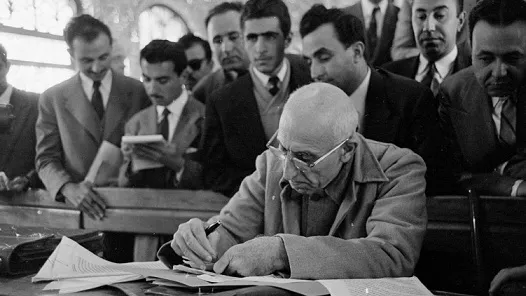The primary and special days in the Iranian calendar are separated into three major categories: Ancient-Persian events, Islamic, and National holidays in iran. By events, we mean the holidays in Iran mentioned in calendars and every person knows them. It is also important to say that although these days are off days in Iran, they are high-season and all the hotels and shops are open. Now we are going to go into details. These special events are as follows:

Ancient-Persian events in Iran
Some of the most remarkable events in this area are:
Nowruz (March 21st)
Nowruz is one of the oldest celebrations and holidays in Iran that Iranian people and some neighboring countries celebrate these days! According to legendary narratives, the celebration of Nowruz is attributed to Jamshid, the fourth king in Ferdowsi’s Shahnameh. This myth dates back to the Indo-Iranian era! And also in Avesta, the earliest Iranian book has mentioned Jamshid as “Yima.” According to this narration, Jam had a goddess who began a war against the devil by Ahura Mazda’s command, which caused drought and famine. But with the destruction of the devil, happiness and blessing come again to those people, and it makes every tree green still! That is why people called “No -Ruz” meaning “New Year” or “New Day” and celebrate this great day by planting a tree. The official holidays in Iran Nowruz are about five days, but for those who go to school (teachers and students) these holidays become more and last up to 13 – 17 days.
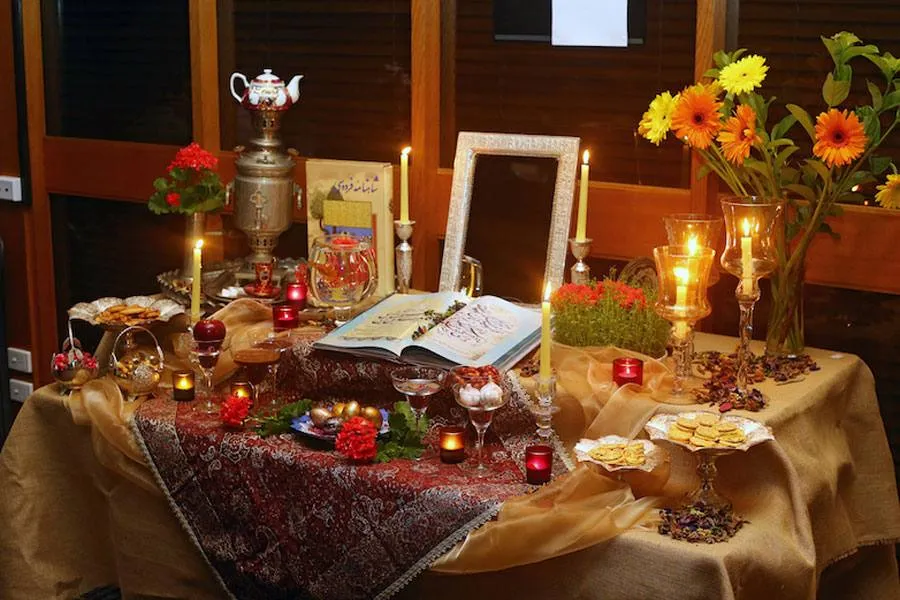
Sizdah-Bedar (April 2nd)
Nowruz’s big celebration needs a happy ending to make it perfect. So on the last day of this celebration, people go out into nature to embrace Sizdah Bedar tradition and make the best memory of the last day of Nowruz. Sizdah Bedar’s customs include knitting some grass to achieve dreams or a picnic in nature and having fun. Picnicking families are everywhere, and there is a particular passion in each city on this day. From morning to evening, you have the opportunity to create sweet times with your loved ones and close the diary of Nowruz celebrations.
This day is known as the Nature Day in our country’s official calendar and counts as one of the official holidays in Iran. People come out of their homes to have fun together.
Most people believe that the word “Sizdah Bedar” means to remove thirteenth’s omen, but by looking at the Persian dictionaries, we find that it means “valley.” So 13 Bedar = on the 13th, we go to the valley!
One of the most prominent traditions on Sizdah be dar is knitting a branch of grass. There is a long-held belief among Iranians that this day we must tie a particular vegetable after making a wish. People believe that by unraveling the greens, they will achieve their hopes and solve their problems.
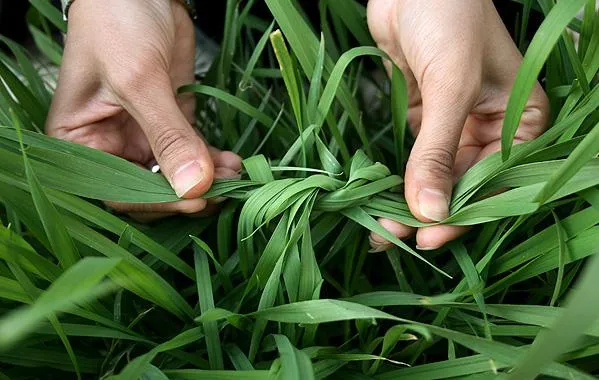
Among the intentions and aspirations, the fortune of young girls and boys is one of the most critical issues. On this day, they knit grass with the hope of finding a suitable wife and the girls whisper: “Sizdah Bedar, another year, with a baby and a husband.”
In Avesta (Zoroastrian Bible) and Asar al-Baqie book by Abureyhan Biruni and the Sunni Book of Moluk-el-Arz and Anbia, written by Hamzeh Esfahani, the reason for this subject goes back to the time of Kiomars (the first man on the earth from Persian mythological point of view).
From a mythological point of view, the first marriage was between a girl and a boy named Mashie and Mashiane. They tied the branch of grass together as a sign and joined hands together. Then the ancient Iranians did the same to change the marriage method throughout history.
Yalda Night (December 20th)
Yalda Night is one of the essential nights in ancient Iran, but it is widely celebrated at present. If we were to tell you about the significance of Yalda Night and what date it was included in the official Iranian calendar, its story would be too long. But it seems that this ancient celebration has been around since first Dariush on the official Iranian calendar. The nightlife and festivals that take place on this night and in various parts of Iran is an ancient tradition. They have not diminished in importance over time; instead, they have grown a special place among young Iranians’ lifestyles.
Generally speaking, Yalda means birth, and Shabe Chelle is another name for Yalda. Yalda is called the time between sunset from December 20th, the last day of autumn until sunrise on December 21st, the first day of winter. At Yalda Night, Iranian families usually cook large dinners. Also, they serve a variety of fruits, most commonly, large watermelon. Eating snacks, the storytelling of elders for the younger and other members of the family, as well as devotion to the Hafez Divan, are other common traditions of this ancient night.
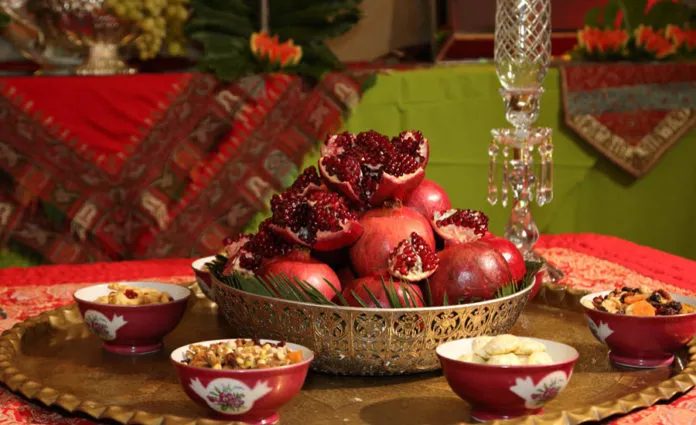
Chaharshanbe Suri (March)
Chaharshanbe Suri is one of the traditional Iranian rituals held on the last Wednesday night of the year. Iranians welcome spring on the last Wednesday of the year by lighting the fire and jumping over it. There is no precise date based on this traditional Iranian custom. The ancient Iranians believed that the old year’s pus and pollution should not be turned over to Nowruz. The new year should start anew. Water resources were already insufficient to remove these pollutants from their daily lives. So, they turned to the element of fire. Since they considered the light to be a manifestation of cleanliness, they burned firewood to destroy the useless tools and disinfect their houses.
Following this issue that Wednesday was fateful for ancient Iranians, the ceremony took place on the last Wednesday of the year. With the arrival of Islam, this ceremony remained. Because the fire in Islam is also part of cleanness, and to completely removes filth, you need to put it on fire. On the other hand, the Arabs considered Wednesday as a nonsensical day and eliminated the nastiness of it by lighting the fire.
We all know that the most important custom of the Charshanbe Suri is to light a fire and live the night by it. The ceremony is usually family-run, and family members gather to celebrate this night. In the past, a massive fire was lit in one of the parts of the city. The fire remained until daylight. One of the essential rituals on Charshanbe Suri is jumping over the fire and singing, “My yellow is yours; your red is mine.” It is, in fact, a form of prayer in which the light is called upon to give people joy and warmth, and instead, take away sickness, troubles, and afflictions.
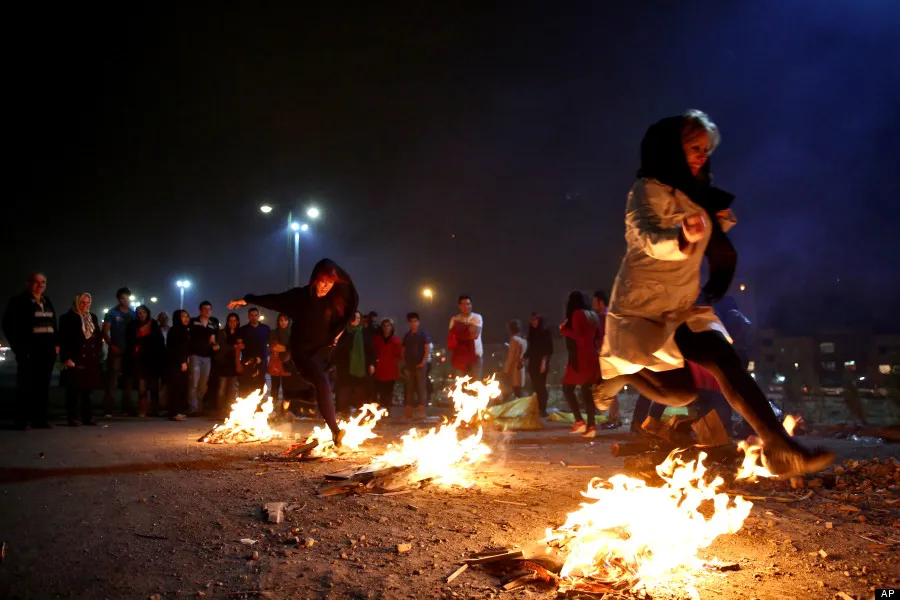
Islamic events and festivals
These events are according to the Arabic lunar calendar. Some of these cases are:
Tasua and Ashura
The month of Muharram is the first of the twelfth month of the Islamic calendar (Hijri Qamari). It is one of the forbidden months for Muslims in which the greatest tragedy and oppression about the Prophet’s family took place in the history of the Islamic world. Ashura is one of the events that has attracted the most attention throughout the past. In addition to its widespread role and profound social and historical impact, Ashura has become a unique culture. This day’s fame among the Shia people is due to the events of Ashura in 61 Hijri Qamari. The significant events of Karbala happened on the ninth and tenth days of Muharram al-Haram. It has made these two days more prominent.
During this time, Imam Hussein, the third Shia’s Imam with seventy-two of his companions, was martyred in Karbala with thirst in war battle against Yazid army. This mourning is not only ordinary mourning but also the biggest mourning which takes place this month. Millions of people mourn his mourning with different races in every part of the world. In Iran, all ethnicities behind different cultures, according to their different attitudes and customs, edify Tasua and Ashura mourning in originality without sacrificing special rituals to preserve the memory of this great tragedy.
Two days of Hosseini’s Tasua and Ashura are off on the official holidays in Iran. This public mourning begins with wearing black mourning clothes and lining the streets and mosques with black flags. After Ashura and even to the end of Safar month, grief ceremonies are held at different times. Mass mourning, chaining, sad song singing, serving dinner to strangers in Mashhad which is done by lighting candles, clay, are just a part of rituals. Each of these has their beauty and variety. The way the services are performed varies depending on the cultural context and the traditions of society.
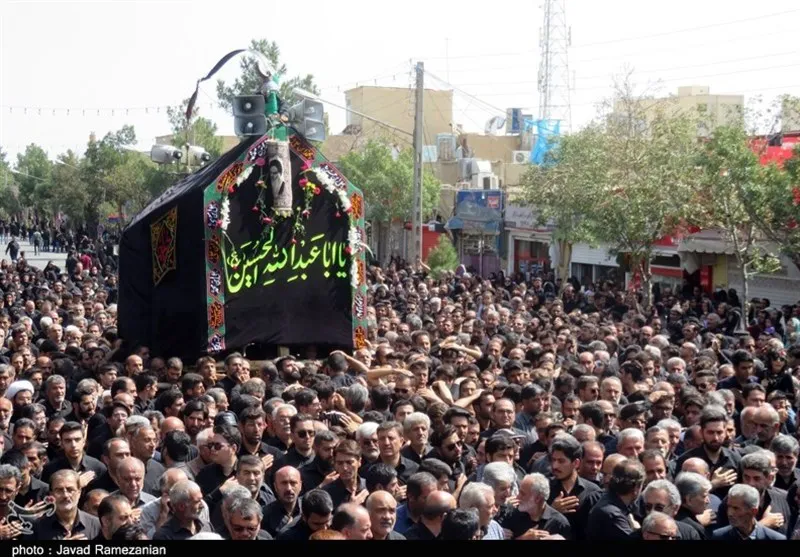
Ramadan
Ramadan is a religious occasion that occurs during the ninth month of Hijri Qamari. Muslims around the world believe the Holy Book (Quran) landed on the Prophet in Ramadan. In the Quran, Muslims are directly commanded to fast this month. Ramadan is an Arabic word which means a lot of heat. In general, Ramadan is regarded as the most blessed and the best month in Islam. This month is also referred to as God’s Party month. It is worth mentioning that the night of Ghadr is one of the nights of Ramadan, which is considered as the most crucial night of the year by Muslims.
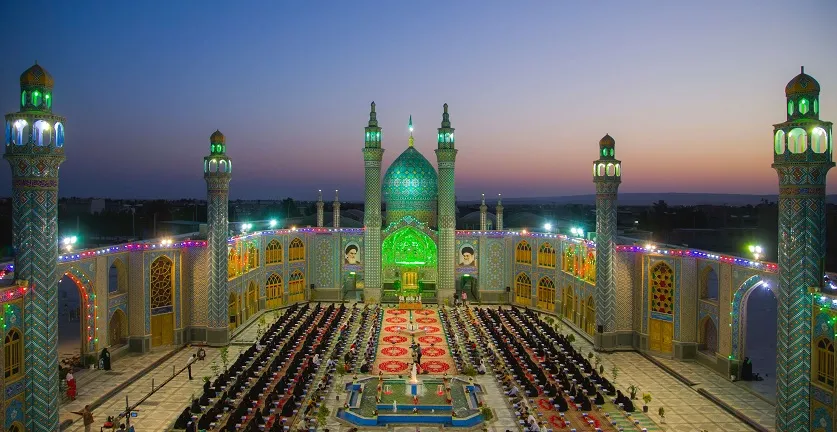
Eid al-Fitr
Eid al-Fitr is one of the two most significant Islamic holidays in Iran which numerous hadiths and traditions have spoken about it. The fasting Muslims who have fasted during Ramadan and refused to eat and drink and do many other activities, now seek their reward from God after the first day of Ramadan.
The first day of the Shawwal month is called Eid al-Fitr, because in this day, fasting, eating, and drinking was removed. Fitr means eating and drinking, that is why, after sundown of the last day of Ramadan, people who were fasting, start eating again.
Eid al-Qadeer
Eid al-Qadeer is one of the largest and most influential Muslim celebrations. This great Eid, along with Eid al-Qorban, has particular importance to different sections of Iranian society. People from different cities have unique customs on Eid al-Qadeer day, including tributes to Sadaat (descendants of the Prophet of Islam) and their families. Sadaat families also prepare their homes before the day arrives. On the day of Eid al-Qadeer, they give their guests gifts that are considered blessings and that people keep it with themselves.
National Holidays in Iran
These holidays date back to the Iranian revolution.
Anniversary of Islamic Revolution Victory of Iran (February 11th)
In Bahman 22nd of 1357, the date of the Islamic Movement of the Iranian people led by Imam Khomeini reached its turning point. On this day, the struggles of the Muslim people finally came to an end, and 2500-year reign of tyranny over the 50-year Pahlavi regime in Iran was eradicated, and the Islamic Republic established.
The Islamic Movement of Iran began in 1341 with the fierce protest of Imam Khomeini and the leading clergy. They turned against the bill of state and provincial associations and what Mohammad Reza Shah called the White Revolution of the Shah and the nation. Mohammad Reza Pahlavi proposed six bills and passed them in a dramatic referendum. Imam Khomeini and authorities in Qom declared Nowruz of 1342, public mourning
Attending in 22nd of Bahman’s walk of the victory of the Islamic Revolution generally means a renewed allegiance to the ideals of the revolution and Imam Khomeini.
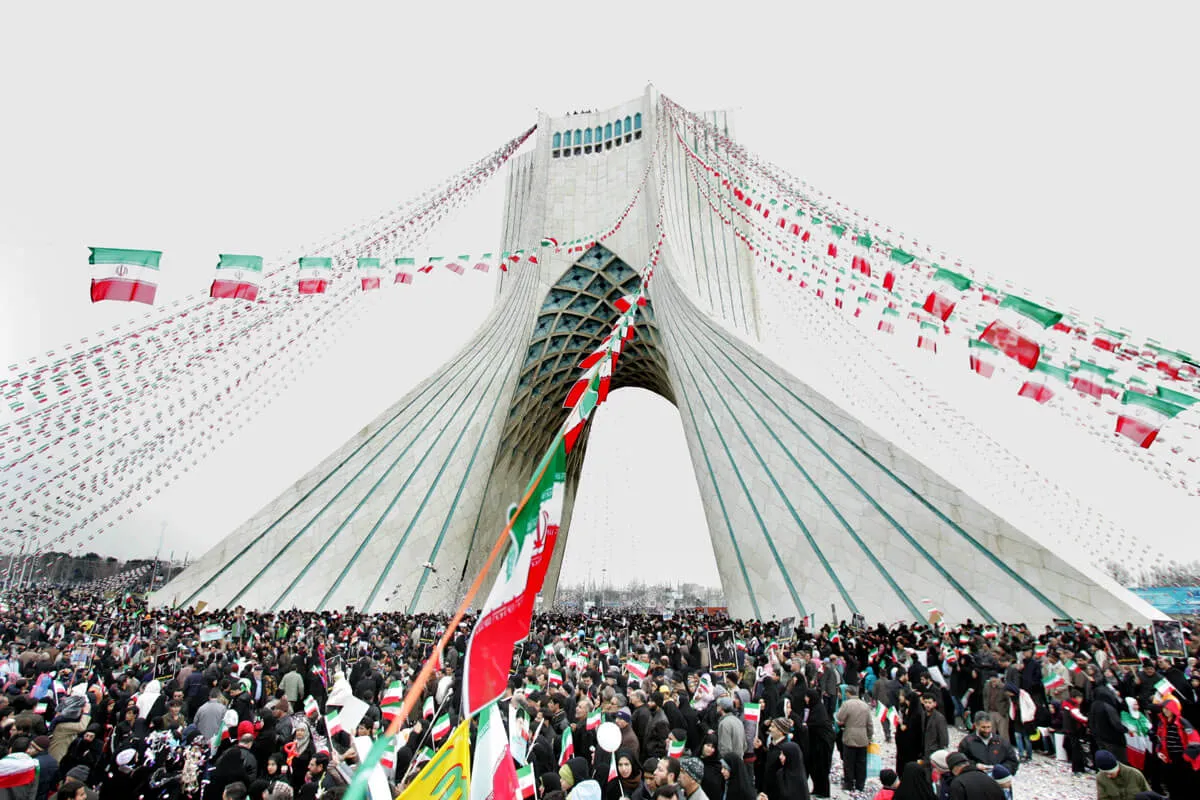
Oil Nationalization Day (March 20th)
29th of Esfand is the Nationalization Day of Oil industry, which was approved by Dr. Mossadegh’s efforts. This day is a turning point in the political, economic, and history of the Iranian people’s war to save the national assets of this frontier from foreigners.
When the first oil well in Iran was discovered more than a hundred years ago in the Soleiman Mosque area in Khuzestan province by an English company, the Iranian government at the time had no awareness of this important event. But these explorers were well aware of the wealth they had gained in Iran. They established their colonial foundations in Iran through ruthless contracts for the extraction, production, and sale of Iranian crude oil. Foreign companies looted Iranian people’s wealth for years, and the Iranian governments of that time did not make any effort to secure the rights of the people.
Dr. Mohammad Mossadegh, the Prime Minister of Iran on those days and a fighter for the path to nationalize Iranian oil, launched a significant movement in the country that was the cornerstone of the “oil-free” economy. In Shahrivar 1320 and the fall of Reza Khan’s period, he was re-elected to parliament in the 14th parliamentary elections. In his campaign for the nationalization of the oil industry, Mossadegh has repeatedly stressed that Iranians must manage and exploit their country’s oil resources.
Finally, with the efforts of Dr. Mossadegh and his companions, article of the Nationalization of the Oil Industry was introduced in the National Assembly on 24th of Esfand 1329 and adopted on 29th of Esfand, the same year.
